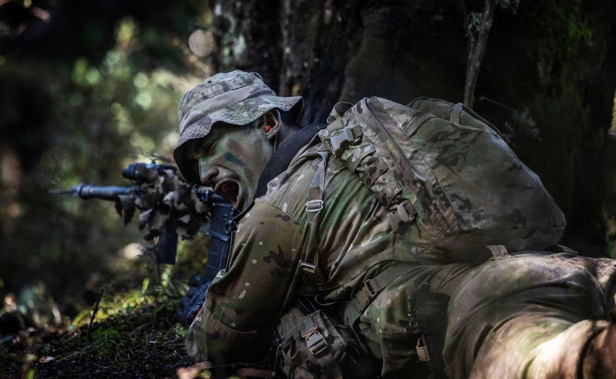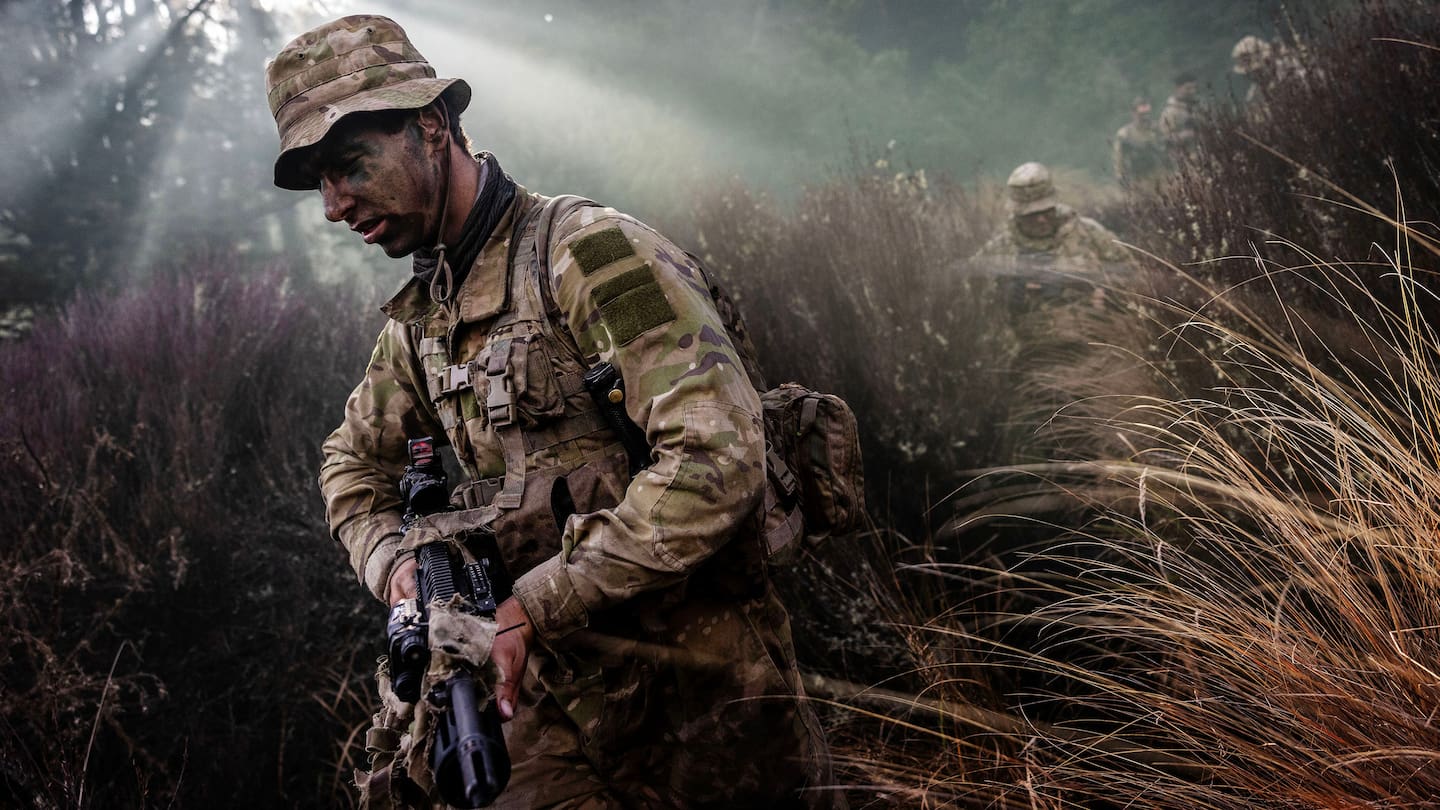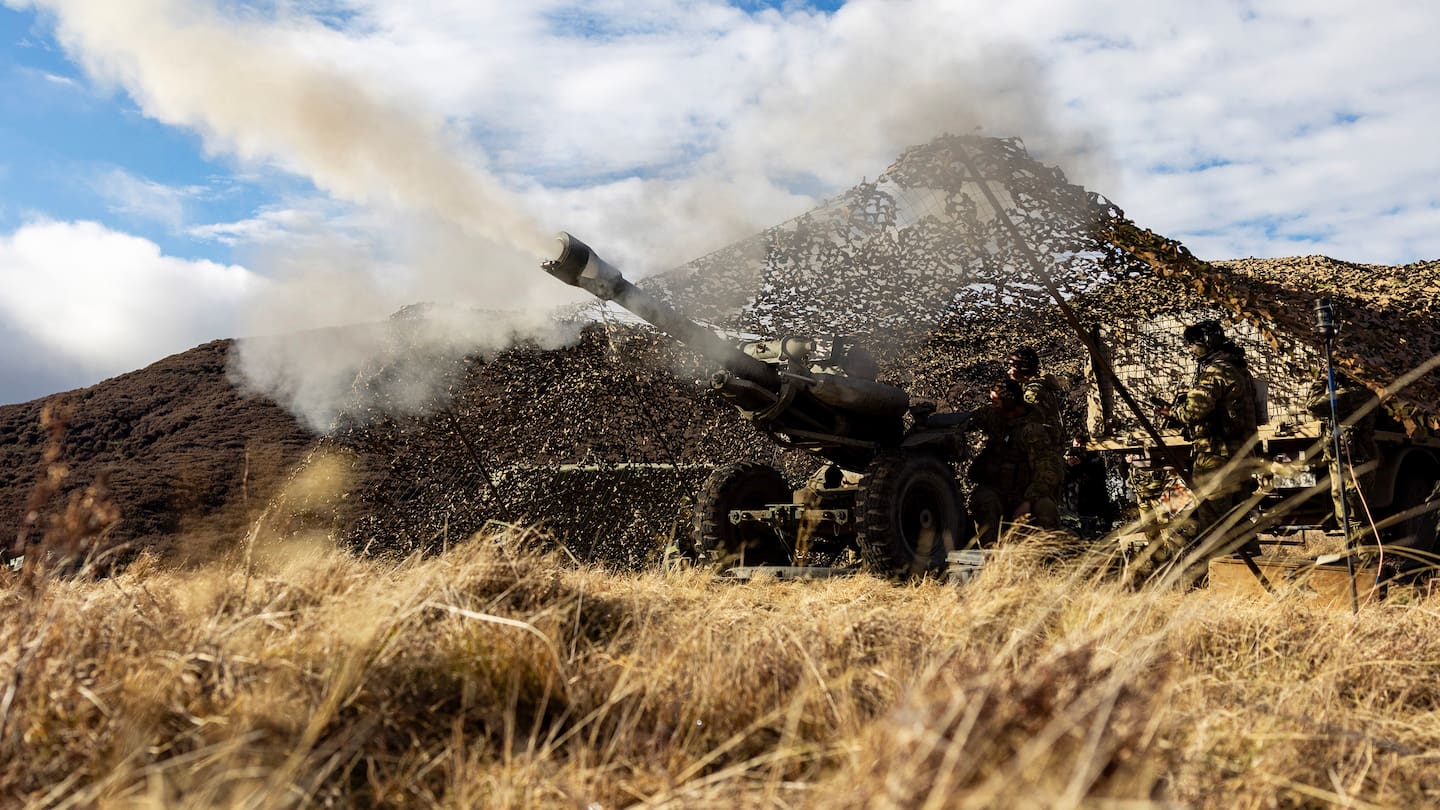
The booming of shells and the rat-tat-tat of machine guns and small arms signify a busy time over the tussock hills of the NZ Army’s Waiouru training area below Mt Ruapehu.
Numerous exercises were held simultaneously during two weeks earlier this month.
They included Exercise Vengeance, testing the readiness of a platoon from Victor Company of the 1st Battalion Royal New Zealand Infantry Regiment.
The School of Artillery was assessing upcoming leaders in managing mortar and 105mm Howitzer operations during Exercise Brimstone.

The Weekend Herald gained exclusive access to the operations, including the final day of Vengeance which, after 12 days of various platoon tasks such as patrolling and creating ambushes, culminated in a live-fire direct attack simulation.
With additional reconnaissance and signals support, the plan was for the platoon to stealthily move into position before machine guns and snipers laid down suppressing fire on a simulated enemy.
Then it was all on: deafening gunfire, bayonets, smoke, screamed orders with co-ordinated movement, ending in the effective elimination of the foe.
Exercise Vengeance is not for the faint-hearted. Low temperatures, foul weather, tough alpine terrain, overnight dig-ins and fatigue all contribute to a testing environment for the troops.
Major Haedyn Jenkinson, 30, commanding officer for Victor Company, directed the exercise.
“Everything that we do is to train within a number of different environments, within a number of different scenarios, to ensure that our soldiers are combat-ready to be able to deploy overseas whenever the Government calls upon us.”

The missions can vary, such as responding to natural disasters in the South Pacific or civil disturbances, such as when the battalion deployed troops to the Solomon Islands in 2021 to support local police.
A few kilometres south of Exercise Vengeance, the School of Artillery, led by Major Oliver Lynn, was putting rising leaders through their paces, setting up and firing shells against mock targets.
“It’ll see a lot of these students navigate that rewarding but difficult transition from just being one of the guys or girls to having rank and responsibility,” he said.
In modern warfare, artillery regiments do far more than fire cannons and mortars. They are responsible for co-ordinating airstrikes and using drones for reconnaissance.
“It’s important for us to be a light, agile, fighting force. And, whilst we hope that we never have to be used in anger, we do have to be ready for what comes in what’s turning into a more volatile, uncertain, complex world.”
Take your Radio, Podcasts and Music with you









